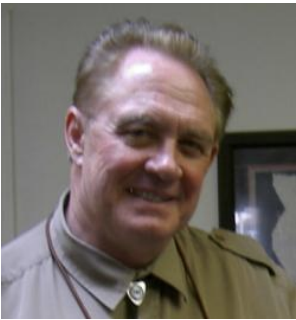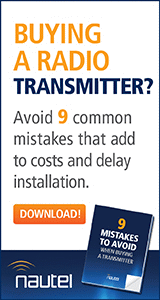The Quarterly Issues & Programs Reports
[February 2021] We all know that properly handling station paperwork is necessary to keep the FCC happy. But, as with all relationships with the government, questions come up. Ken Benner would like to help with the quarterly chore: the Issues and Programs List.
Without question, the Issues and Programs List was the number one FCC required Public File item questioned during every Alternative Broad-cast Inspection (ABIP), Power Point program, and addresses I have conducted over the past thirty years.
What goes into this file folder, for how long, and exactly what defines an appropriate entry? My sole source of this information was developed from my visits to the FCC’s Enforcement Bureau Office in Washington, D.C.
Now, with the online Public File requirement, it is easier for the FCC to identify and cite stations that miss the quarterly deadlines – and the required content. Misunderstanding the requirements could lead to Violation Notices and fines.
NEED TO DOCUMENT SERVICE
Why is the Issues and Programs List so import-ant to the FCC?
Let us not forget the purpose for which every broadcast license is granted: “to serve its com-munity’s public interest, convenience, and necessity.” Hence, these reports are mandated by the Commission to encourage stations to remember to deploy local programming to show their local involvement in the community – and to prove such with entries in their Issues and Programs File.
Today, many stations operate totally unattended, sometimes for days on end, especially during the current pandemic – as permitted by the FCC (as long as the EAS system is left in the “auto-forward” position, so any local emergency announcements will be broadcast during these periods). After a few years of the permitted unattended operation the Commission realized many stations were seriously negligent in their requirement to “Serve the Public” and thus began serious enforcement of the Issues and Programs Public File folder.
COSTLY HASSLES
Indeed, over the past couple of years stations have had to pay eight to 15 thousand dollar fines for not being compliant with entries in the on-line Public File folder “Issues and Program Reports” (IPR) as required by the FCC Rules in Section 73.3526(e)(12) for commercial station and 73.3527(e)(8) for non-commercial stations.
In past years, many of these fines came as a result of self-admissions on the License Renewal form that some or all of the Issues and Program reports were missing. In more than a few cases, the License Renewal itself was held up by such violations. Occasionally, new station owners have found themselves responsible for paying the fines for their previous owners.
Right now, during the License Renewal Season, the FCC is actively scanning the online Public Files for missing/incomplete reports. Last year, the Enforcement Bureau even sent out a Public Notice to remind – and warn – stations that many Public Files were found to be deficient and needed attention before more enforcement ensued.
But it is easy to avoid such a situation.
IS IT NEWS OR AN ISSUE?
The first step is to identify what are the issues of interest in your community (of license).
In my Power Point presentations to assembled broadcaster conventions, and in visits to multiple station groups, I often was asked to define the difference between an item that was essentially “news” and an “issue” that would qualify for the FCC filing.
For example, let us say we have a news item regarding the large number of car accidents every year at the corner of 4th and Main streets – that is simply news and not an issue!
But, now take a look at a related item that is actually worthy for entry in your “Issues and Program” Public File entry:
“During yesterday’s city council meeting, it was suggested a new but expensive traffic light system costing millions of dollars was to be placed on a ballot to be voted on by the citizens of our community.”
Can you see the difference here between a news item and an issue item that could be used in the Issue and Program Public File Folder?
THEN FOLLOW THROUGH
Once you have identified the true issues of local importance, the trick is in arranging for and providing the “programs” to respond.
Once you take a few moments to review the key points, it is certainly not rocket science to be compliant with the FCC’s requirement. Your qualifying “programs” can be as short as a Public Service Announcement or as long as a dedicated discussion in a talk program. The key is to identify and present an issue, and let the community know what is being done to address it. Document with whom you speak and what about.
Perhaps your station is completely automated, with no live staff. One significant question that is raised repeatedly by stations fed 24/7 by satellite programming was how could they could possibly be compliant despite being unmanned week after week.
IT IS NOT THAT HARD
My answer was discovered while inspecting a very remote AM somewhere in Wyoming – a station that actually was fully automated 24/7. As they say: “Where there’s a will there’s a way.”
This licensee reached out and hired a high-school boy and girl team equipped with a simple handheld cartridge tape-recorder. One day each week they would visit the local library to discuss its latest book addition, or the local chief of police, or a local veterinarian for suggestions and comment. They even interviewed me one week.
Then, on Saturday or Sunday they would bicycle out to the transmitter site, unplug the Starlight feed and plug in their little tape recorder play the week’s item and carefully log the date, time, length, and subject of the program titled “Our Item of the Week.” Afterward, they gave the station call letters, reconnected the satellite feed program, and peddled back home – “Mission Compliance” fully addressed.
THE PAPERWORK PART
How do you comply?
Those of you who have suffered through one of my ABIP Alternative FCC Compliance Certification Inspections are familiar with a simple means of being compliant with the Issues & Program report Public Files folder.
Before departing on these trips, I would prepare a list of suggestions and questions defining what I thought – in good faith – would properly address this matter, since they are only vaguely defined in FCC Regulations 73.3526(e)(12) or 73.35269(e)(8) which requires filing quarterly reports by “…January 10th, April 10th, July 10th, and October 10th”.
According to the FCC each item is to include “a brief narrative describing what issues were giv-en significant treatment, and to include at a min-imum the time, date, duration, and title in which the issue was treated.”
MAKING IT EASY
The specific minimum number of issues is not defined in the Regulations but the method des-cribed here has been provided to the Commis-sion where Staff have indicated “no problem with it.”
Twenty+ years ago, Karen and I prepped a simple form addressing all of these requirements that is still in use for thousands of stations for whom we conducted inspections.
We used an 8-1/2 x 11 sheet of paper in land-scape format, noting: “The following is a list of some of the more significant community issues addressed by this station for the quarter specified. This list is by no means complete, nor is the order in which these issues appear intended to imply any degree of priority of significance of the issues.”
We then titled it:
“Quarterly Issues/Program List for Station ___: _1st _2nd _3rd _4th Quarter of ____ (the year).”
Located here, you will find a copy of this form I have shared with stations for over two decades.
Then, all you have to do is fill in the lines. For example:
- Issue Description: Dog leash law
- Program Segment: Ken’s 7:00 AM News
- Date/Time: 1/18/21 7:00 AM
- Duration: 45 seconds
- Duration of Segment: Tape Mayor Jones’ urges Council to pass law.
Make room for 12 or 13 lines so issues that cover the entire quarter may be listed by your program or news director. As issues change, the programs should reflect it by changing the responses.
DO IT, FILE IT, RELAX
Following the end of the quarter and within ten days (i.e. Jan 10th, April 10th, etc), finalize the list, upload the completed sheet in the “Issues/ Programs” folder of your online Public File.
Now, relax a bit.
Hundreds of stations around the country currently are using this simple means of being compliant with this FCC requirement. To the best of my knowledge, no station using our suggested compliance form listing the issues, time, date, length, and program subjects of such items has ever been challenged or fined.
Indeed the old phrase is true: “it takes 95% of the time to define most any problem but only 5% of the time to fully address most any ques-tion.”
Please note – just to be totally clear:
The preceding is a good faith effort as a part of the Alternative FCC Inspection Certification Program to explain and simplify FCC regulatory compliance. It is not to be construed as professsional legal advice.
– – –
Ken Benner, W0LHV, CBRE, NCE, has served as an inspector in the FCC’s Alternate Broadcast Inspection program for the past 25 years.
You can contact Ken at:
– – –
Would you like to know when other articles like this are published? It takes only 30 seconds to add your name to our secure one-time-a-week Newsletter list. Your address is never given out to anyone else.
– – –


